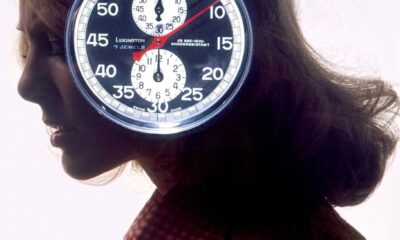Health
Combating the bright lights of late evening can reduce your risk of diabetes

Cumulative incidence of type 2 diabetes by level of night light exposure. Credit: The Lancet Regional Health – Europe (2024). DOI: 10.1016/j.lanepe.2024.100943
Avoiding bright lights at night could be a simple way to reduce your risk of diabetes, according to a study from Flinders University.
The studypublished in The Lancet Regional Health – Europereveals the compelling relationship between light exposure and the risk of developing type 2 diabetes.
Type 2 (acquired) diabetes is a chronic condition that affects the way the body uses insulin. It develops over many years, is difficult to treat and is usually related to lifestyle factors such as inactivity and obesity.
“We found that exposure to brighter light at night was associated with a higher risk of developing type 2 diabetes,” said senior author Associate Professor Andrew Phillips from the College of Medicine and Public Health.
In the large modeling study, the research team examined whether personal light exposure patterns predicted diabetes risk using data from approximately 85,000 people and approximately 13 million hours of light sensor data.
The participants – who did not have type 2 diabetes – wore devices on their wrist for a week to track their light levels day and night.
They were then followed for the next nine years to observe whether they developed type 2 diabetes.
“Exposure to light at night can disrupt our circadian rhythm, leading to changes in insulin secretion and glucose metabolism,” he says.
“Changes in insulin secretion and glucose metabolism caused by disrupted circadian rhythms affect the body’s ability to regulate blood sugar levels, which can ultimately lead to the development of type 2 diabetes.”
More light exposure at night (between 12:30 p.m. and 6 a.m.) was linked to a higher risk of developing type 2 diabetes, and this was true regardless of how much light people were exposed to during the day.
The study took into account other factors associated with type 2 diabetes, such as lifestyle habits, sleep patterns, shift work, diet and mental health.
Even after these factors were taken into account, the findings showed that more light at night was still a strong predictor of developing diabetes.
“The results showed that exposure to brighter light at night is associated with a higher risk of developing diabetes, with a dose-dependent relationship between light exposure and risk,” said Associate Professor Phillips.
“Our findings suggest that reducing light exposure at night and maintaining a dark environment may be an easy and inexpensive way to prevent or delay the development of diabetes,” he adds.
More information:
Daniel P. Windred et al., Personal light exposure patterns and incidence of type 2 diabetes: analysis of 13 million hours of light sensor data and 670,000 person-years of prospective observation, The Lancet Regional Health – Europe (2024). DOI: 10.1016/j.lanepe.2024.100943
Quote: Battling the bright lights of late evening may reduce diabetes risk (2024, June 25), retrieved June 29, 2024 from https://medicalxpress.com/news/2024-06-late-night-bright-diabetes .html
This document is copyrighted. Except for fair dealing purposes for the purpose of private study or research, no part may be reproduced without written permission. The content is provided for informational purposes only.











